
Hamstring strain injuries are the most prevalent injury in the AFL. There is common consensus that strengthening the hamstrings should make them more robust and reduce the likelihood of an injury occurring. High performance programs in elite sport tend to utilise a holistic approach by incorporating several exercises aimed at improving lower limb strength in general, rather than a single exercise for the purpose of reducing injury risk. However why do these injuries still have the highest incidence within the AFL, despite all the preventative evidence that exists? This program of research will investigate the current practices for hamstring strain injury prevention and rehabilitation and the effectiveness of these interventions on reducing the incidence of injury.
Student: Mr Ray Breed
Supervisors: Dr David Opar, Dr Ryan Timmins, Dr Jack Hickey

Hamstring strain injuries are the most common type of injury in a variety of sports – many of which reoccur within 12 months. This can have severe performance and financial burdens on elite sporting clubs, which underlines the importance in understanding how different exercise interventions might contribute to reducing the risk of hamstring strain injury and restoring muscle structure and function during rehabilitation. This study aims to investigate the adaptations in hamstring muscle strength, structure and size after interventions where people exercise by holding a weight in place and not moving the muscle (isometric exercise). This will be compared to the adaptations in hamstring muscle strength, structure and size in comparison to an eccentric “lowering-only” exercise movement training program, where the muscle only lengthens while exercising.
Student: Mr Declan Carmichael
Supervisors: Dr Ryan Timmins and Dr Jack Hickey
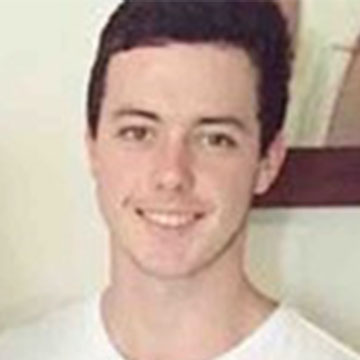
This project looks at the validity and reliability of global navigation satellite systems throughout movements commonplace to field-based team sports. Specifically, we are looking to discover if the validity and reliability is consistent over time eg multiple sessions.
Student: Mr Zachary Crang
Supervisors: Dr Rich Johnston, Dr Grant Duthie, Dr Jonathon Weakley
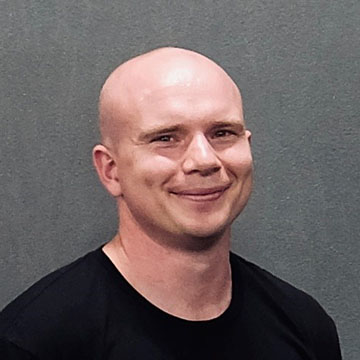
This program of research will investigate factors that impact adolescent athletes’ performance and injury rates. Studies will look to quantify the psychological and physical loads that adolescent athletes experience and the impact of these loads on performance and injury. Further, factors that may build resilience to these loads will be investigated. Ultimately, this program of research will assist practitioners in knowing what loading factors may affect performance and injury, and how to best manage these loads in adolescent athletes.
Student: Charles Dudley
Supervisors: Dr Jonathon Weakley and Dr Richard Johnston
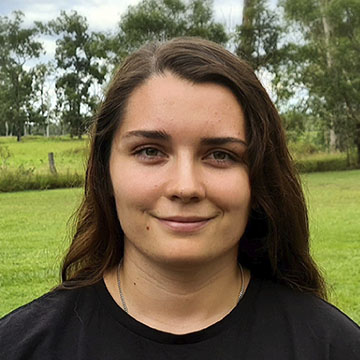
Sports-related concussion, a transient trauma induced alteration in mental status, accounts for approximately 1.6 to 3.8 million reported cases annually in the United States alone.
Current protocols used to diagnose and determine return to play typically rely on subjective interpretation, with poor sensitivity one week post-injury. Due to the issues with these assessments, it is suggested that players return to their respective sports with lingering neuromuscular deficits.
Indeed, lab assessments have highlighted poorer neuromuscular control in previously concussed athletes that persist for months following a concussive event. However, these assessments are time consuming and require access to specialised equipment that make them redundant for many practitioners. It has been proposed that the use of microtechnology, specifically inertial measurement units (IMUs) may aid in objectively assessing alterations in gait parameters upon return to play. The studies in this PhD aim to assess validity and reliability of thoracic placed IMUs and their place in assessing motor deficits post-concussion.
Student: Laura Dunne
Supervisors: Dr Rich Johnston, Associate Professor Stuart Cormack, Dr Michael Cole

Caffeine is the most commonly used ergogenic aid employed by athletes to enhance performance. It is a psychoactive substance that acts primarily on the central nervous system to stimulate increases in cognition and physical performance. The mechanism of its action is the ability to bind to adenosine receptors within the brain. Caffeine is similar in structure to adenosine and acts to negate the role of this neurotransmitter in promoting sleep over wake in the regulation of the sleep-wake cycle. Although there is a wide body of research supporting its use as an ergogenic aid for athletic performance, there is a lack of understanding regarding the patterns of the caffeine consumption of professional athletes and the potential impacts on subsequent sleep. Given the negative performance decrements associated with poor sleep, this is an issue requiring attention. This program of research aims to explore the current patterns of caffeine consumption in the professional athlete population and the relationship with ensuing sleep duration and measures of sleep quality. Building from this, the program will aim to investigate the dose-timing response of caffeine on objective measures of sleep quality.
Student: Carissa Gardiner
Supervisor: Associate Professor Shona Halson and Dr Andrew Townshend
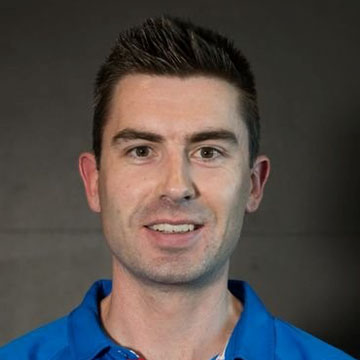
Inertial measurement units (IMUs) are used for running gait analysis in a variety of sports. These sensors have been attached at various locations to capture stride data. However, it is unclear if different placement sites affect the derived outcome measures. These studies will examine the validity and reliability of accelerometers placed at various sites for the measurement of discrete stride parameters in addition to the impact of fatigue on vertical stiffness and stride variables.
Student: Mr Ben Horsley
Supervisors: A/Prof Stu Cormack, Dr Paul Tofari, Prof Shona Halson
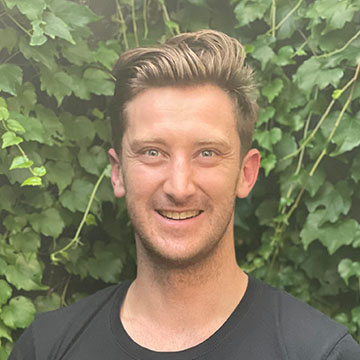
This program of research will aim to investigate how the inherent variation of the biceps femoris long head structure and geometry may influence region specific strain during high-speed running and common hamstring exercises. This project will also aim to assess how the biceps femoris long head musculotendinous structure, particularly the aponeuroses, adapt in response to injury, chronic mechanical loading, and de-loading as well as how these variables may influence sprinting biomechanics.
Student: Mr Scott Hulm
Supervisors: Dr David Opar, Dr Jack Hickey, Dr Nirav Maniar and Dr Ryan Timmins
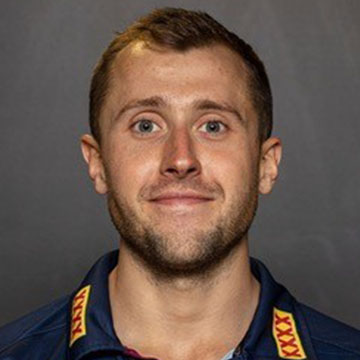
This program of research will investigate commonly used fatigue measures and their relationships with physical performance. Studies will quantify the training practices, physical adaptation, and their relationship. Finally, it will investigate how fatigue responses manifest following match play and how the individualised recovery response can be influenced by the physical demands of the game.
Student: Mr Matthew Ireton
Supervisors: Dr Jonathon Weakley, Prof Shona Halson, Dr Rich Johnston

This series of studies examines the sleep characteristics in elite team sport athletes. Study 1 assesses the objective sleep characteristics, via wrist worn actigraphy, of elite male Australian Football (AF) players during the pre-season and competitive phase whilst Study 2 assesses the association between objective sleep characteristics, self-reported measures of wellbeing and external load in the same population over a 15-day pre-season training period. Study 3 assesses the impact of the quality and quantity of sleep during an international flight on subsequent objective sleep characteristics, training and match day load, self-reported wellbeing, and perceptions of jetlag of elite female cricketers during an ICC T20 Women’s World Cup.
Student: Ms Benita Lalor
Supervisor: A/Prof Stu Cormack, Prof Shona Halson

Description: Current evidence suggests that neurological maladaptation’s occur as a result of hamstring strain injury. This project will ultilise transcranial magnetic stimulation (TMS) and transcranial direct current stimulation (tDCS) to attempt to address these maladaptation’s during the rehabilitation process.
Student: Mr Connor Lee Dow
Supervisors: Dr David Opar, Dr Paul Tofari, Dr Ryan Timmins

This program of research will investigate the impact of sleep on skeletal muscle. It will explore how sleep influences skeletal muscle metabolism, performance, and recovery. The findings of this research may help identify strategies that can be used to optimise adaptations and recovery from exercise.
Student: Mr Matthew Morrison
Supervisors: Dr Jonathon Weakley and Professor Shona Halson

There is currently very little known regarding the potential influence of the menstrual cycle on aspects of sleep, performance and recovery. In fact, there is not one published article that has assessed sleep quality or sleep quantity throughout the menstrual cycle in elite athletes. Furthermore, while fluctuations in ovarian steroid hormones have been suggested as a reason for larger variance in physical performance when compared to males, these have not been directly investigated.
This project will involve a series of studies that will examine the relationship between menstrual cycle, sleep, performance and recovery in elite athletes. Overall, the project will examine both subjective and objective measures of sleep and a variety of performance tests across the menstrual cycle in elite athletes. Furthermore, female hormones will be measured for the appropriate verification of the different menstrual phases. Considering the lack of information in this area, the proposed projects aim to help support the healthy development, wellbeing, and performance of female athletes.
Student: Madison Pearson
Supervisors: Associate Professor Shona Halson and Dr Jonathon Weakley
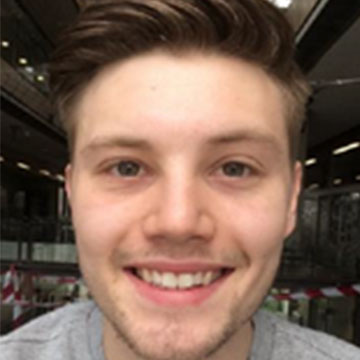
Hamstring strain injury is the most common injury in running based sport. There is limited evidence regarding the role that nervous system function plays in hamstring injury risk. This program of research aims to investigate the corticospinal function of the hamstrings following injury and if these characteristics can be modified.
Student: Mr Joel Presland
Supervisors: Dr David Opar, Dr Paul Tofari, Dr Ryan Timmins

The aim of this project is to assess the validity of inertial measurement units for estimating sagittal plane lower limb joint angles during high-speed running. Participants will complete running trials on a non-motorised treadmill while data is collected simultaneously by the gold standard optimal motion capture system and inertial measurement units. The measurement error between the two systems will be calculated to determine whether inertial measurement units are a valid tool for conducting a kinematic gait analysis.
Student: Kara Price
Supervisors: Dr David Opar and Dr Nirav Maniar
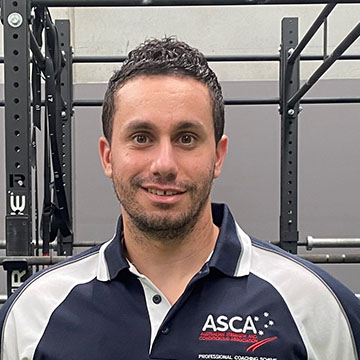
The majority of mental fatigue literature has focused on endurance performance and capacity when fatigued. However, there is a lack of research in the strength and power performance space. As such, this program of research aims to focus on quantifying the impact mental fatigue has on strength and power performance.
Student: Mr Alex Sakadjian
Supervisors: A/Prof Stu Cormack, Dr Paul Tofari, Prof Shona Halson

Impairment in lower limb strength and biomechanics is common after anterior cruciate ligament reconstruction (ACLR). These impairments have been associated with higher risk of re-injury and early development of knee osteoarthritis. Sex differences in lower limb strength and biomechanics have been previously reported in healthy individuals. However, it is still unclear whether these sex differences are also present after ACLR. These studies aim to identify potential differences in recovery after ACLR between males and females which can be used to develop sex-specific rehabilitation programs
Student: Mr Argell San Jose
Supervisors: Dr David Opar, Dr Nirav Maniar, Dr Ryan Timmins

This program of research will investigate the acute and chronic effects of high-intensity interval training methods used during team-sport conditioning on physiological, neuro-muscular, and musculoskeletal responses. It will demonstrate how different methods can influence the responses to training, and how exercise variables can be manipulated to enhance performance and mitigate fatigue.
Student: Mr Fraser Thurlow
Supervisor: Dr Jonathon Weakley, Dr Andrew Townshend